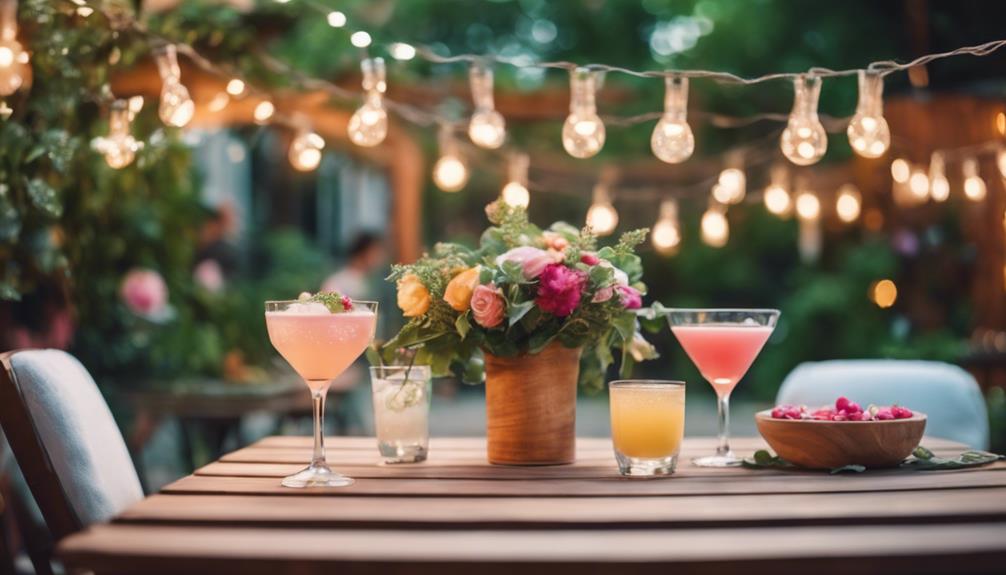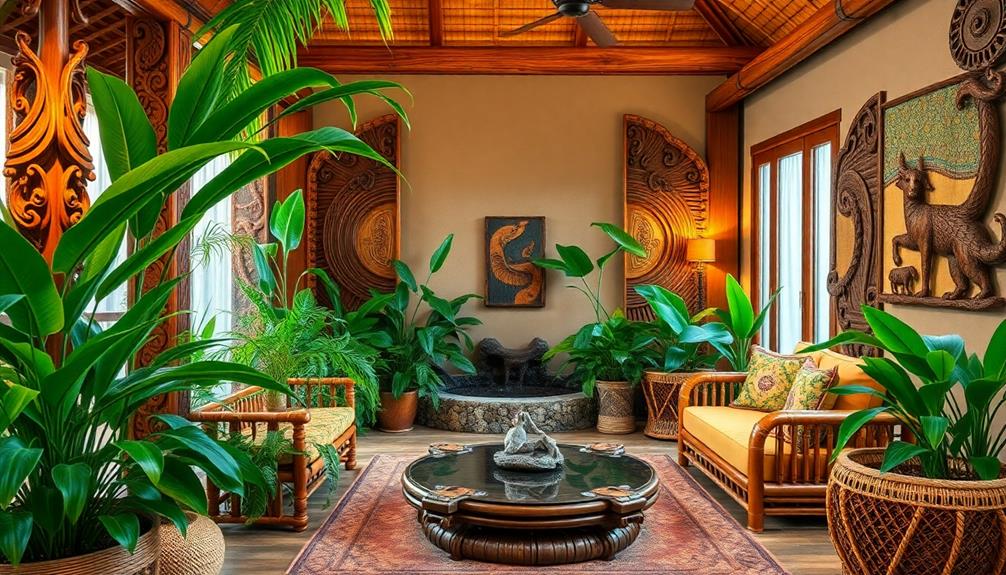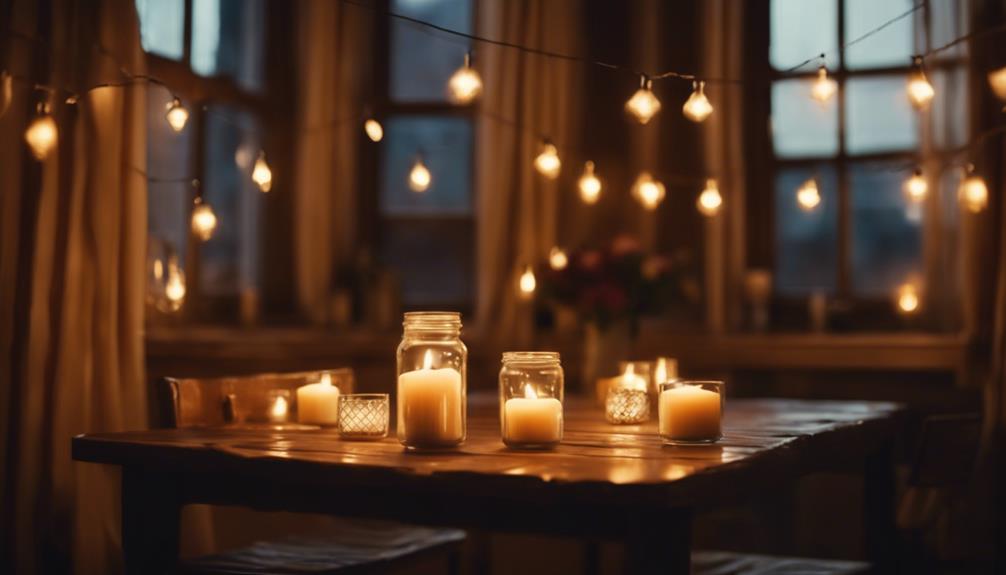To wow your guests this late summer, don't forget your decor and planning. Start with a delicious charcuterie board to break the ice and encourage mingling. Arrange comfortable seating to spark conversation, and add interactive food stations for a fun twist. Enhance the ambiance with candlelight, string lights, and fresh flowers. Lightweight rattan furniture and potted succulents make stylish outdoor centerpieces. For a cozy vibe, use an indoor rug and mix textiles. By incorporating these tips, you'll create an unforgettable gathering. Keep an eye out for more ideas to elevate your entertaining game!
Key Takeaways
- Use lightweight rattan or wicker furniture to create a comfortable and stylish outdoor seating area for your guests.
- Incorporate potted succulents and fresh flowers as centerpieces to enhance the visual appeal of your space.
- Set up interactive food stations, like a build-your-own dessert bar, to engage guests in a fun and memorable way.
- Utilize candlelight and string lights to create a warm and inviting atmosphere for late summer evenings.
Organizing for Successful Entertaining
To host a successful gathering, being organized is essential for creating a smooth and enjoyable experience for you and your guests. Start by planning your summer entertaining ideas well in advance. A checklist and preparation timeline will help you manage tasks leading up to the event, ensuring everything runs seamlessly.
When it comes to food, consider beginning your menu with a charcuterie board. This grazing snack not only sets the tone but also encourages social interaction among guests. Arrange your charcuterie board with a variety of cheeses, meats, and accompaniments on elegant trays to maximize your table space. Keeping the presentation simple and clean will make it easy for your guests to enjoy without feeling crowded.
Also, be mindful of your seating arrangements. Design them to promote conversation, allowing guests to engage with one another. If you have the space, incorporate interactive food stations to further enhance the lively atmosphere.
Creative Menu Ideas
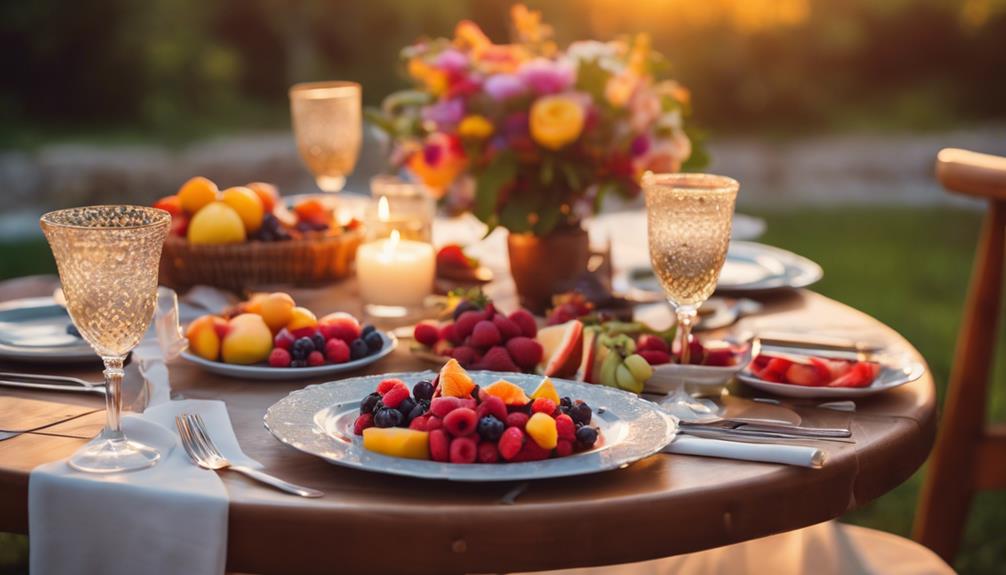
Crafting a creative menu for your late summer gathering not only delights your guests' palates but also adds a unique flair to the overall experience. You can impress everyone at your dinner party with a thoughtful selection of dishes that celebrate the season's bounty. Here are some ideas to reflect on:
- Grilled Vegetable and Quinoa Salad: Make this substantial dish in advance and serve it at room temperature for a stress-free meal.
- Watermelon and Feta Salad: Pair this invigorating option with a chilled rosé wine to enhance both taste and presentation.
- Charcuterie Cheese Board: Create a stunning centerpiece with a variety of cheeses, cured meats, and seasonal fruits that will tantalize your guests' taste buds.
- Mediterranean Feast: Experiment with themed dishes like stuffed grape leaves, tzatziki, and grilled shrimp skewers for an exciting twist.
With these creative menu ideas, your late summer gathering will be a hit, making it an event to remember!
Enhancing Ambiance and Atmosphere
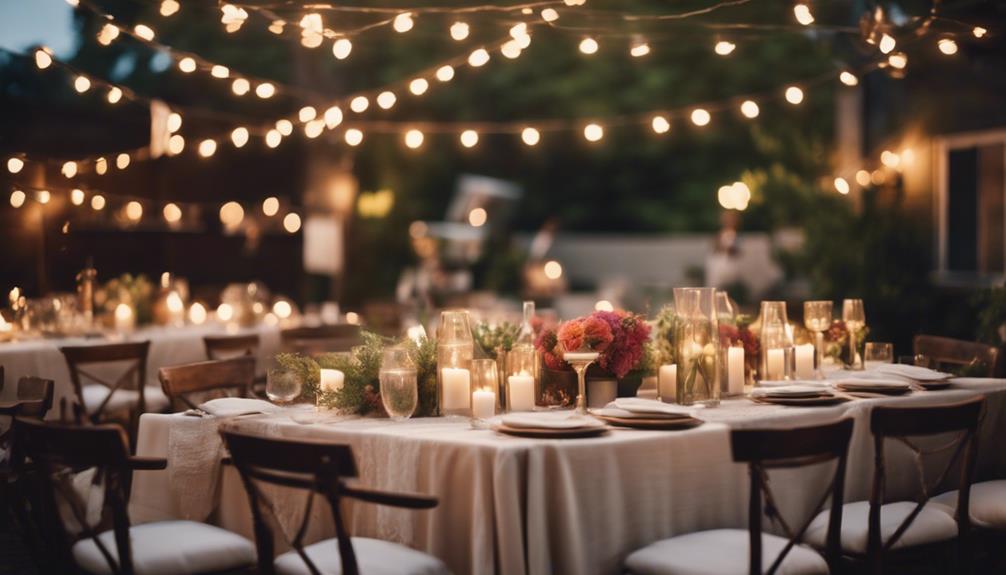
Creating an inviting ambiance is vital for making your late summer gathering memorable and enjoyable for everyone.
Start by incorporating ample candlelight and string lights to create a warm atmosphere that enhances your outdoor space. When the sun sets, a fire pit can serve as a focal point, providing both warmth and a cozy spot for conversation.
Adjust your lighting levels to create a relaxed environment, mixing natural light with portable outdoor lamps or battery-operated options for flexibility. This guarantees your space feels welcoming, even in areas without electrical outlets.
Don't forget the power of music—curate a playlist featuring a mix of modern and classic hits to set the mood and encourage social interaction among your guests.
To add visual interest, utilize decorative elements like fresh flowers or unique centerpieces that complement your theme, enhancing the overall aesthetic.
Engaging Your Guests
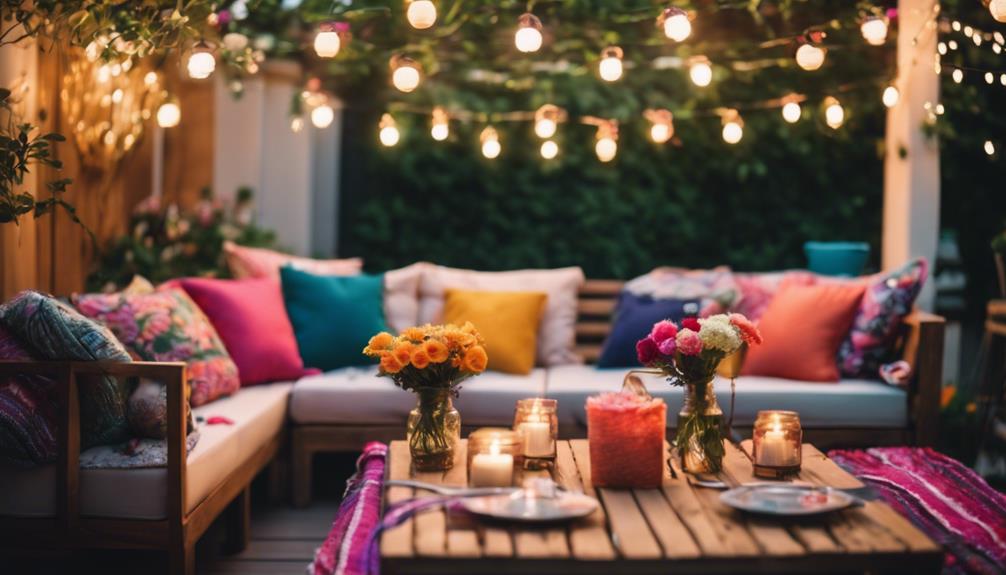
Engaging your guests starts with thoughtful seating arrangements that encourage conversation and connection among everyone. By mixing guests who may not know each other well, you create an inclusive atmosphere where meaningful interactions can blossom.
Here are some tips and tricks to keep your guests engaged throughout the gathering:
- Interactive food stations: Set up DIY s'mores or salad bars, allowing guests to customize their meals while mingling.
- Icebreakers: Use themed discussion prompts to spark conversations, ensuring everyone feels included and valued.
- Activities and games: Plan some fun activities that cater to your guests' interests, providing entertainment and fostering interaction.
- Collaborative playlist: Encourage guests to contribute song choices, creating a lively atmosphere and making everyone feel part of the event.
Stylish Outdoor Decor Tips
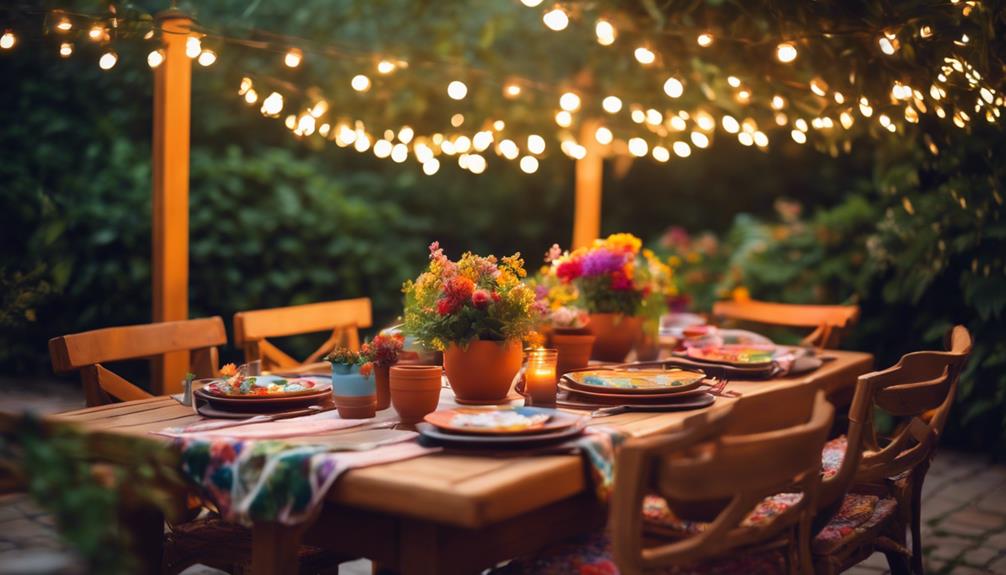
Transform your outdoor space into a stylish retreat with a few thoughtful decor choices that set the perfect tone for late summer entertaining. Start by selecting lightweight rattan or wicker furniture, which not only adds a modern aesthetic but also provides durability for those summer gatherings.
Consider using indoor plants as outdoor decor. Potted succulents make great centerpieces, while plant slings can create eye-catching displays above dining areas. Enhance the ambiance further with rechargeable lighting options like battery-operated table lamps, ensuring that your space remains inviting, even in areas without electrical outlets.
Mixing and matching textiles is another effective way to elevate your outdoor setup. Use complementary patterns for table runners and napkins to add warmth and personality while maintaining a cohesive color scheme. Ultimately, lay down an indoor rug to provide a cozy touch that's easy to clean and transport after your gatherings.
| Element | Purpose |
|---|---|
| Rattan/Wicker Furniture | Cozy gathering space |
| Potted Succulents | Stylish centerpieces |
| Rechargeable Lighting | Inviting ambiance |
| Indoor Rug | Cozy atmosphere |
Conclusion
By following these tips, you'll create an inviting atmosphere that'll leave your guests raving about your late summer gatherings.
For instance, imagine hosting a sunset barbecue where you've arranged cozy seating around a fire pit, served invigorating seasonal cocktails, and played lively music in the background.
Your friends will appreciate the effort you put into enhancing their experience, and you'll create unforgettable memories together.
So get ready to wow your guests and make this summer one to remember!
